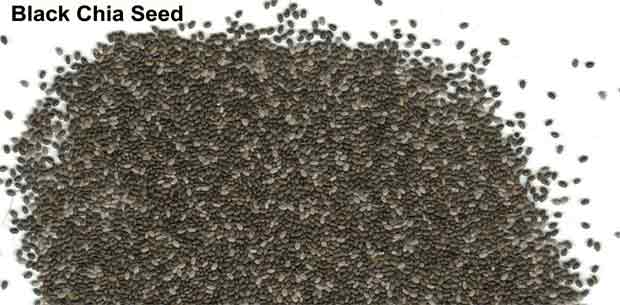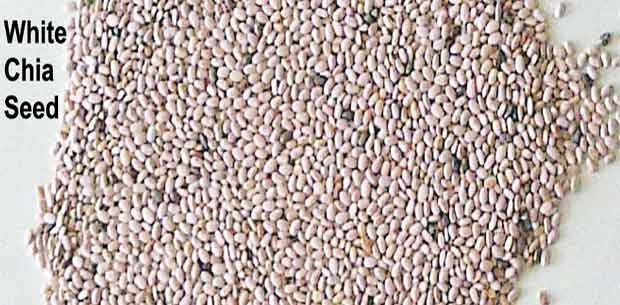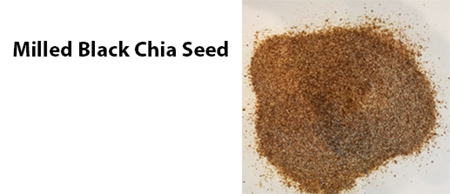Conversion of ALA to EPA and DHA
There is significant controversy regarding the amount of conversion from alpha-linolenic acid (ALA 18:3ω3) to eicosapentaenoic acid (EPA 20:5ω3), docosapentaenoic acid (DPA 22:5ω3) and docosahexaenoic acid (DHA 22:6ω3) that takes place in humans. There is sufficient evidence, however, that conversion does take place. The amount that is converted varies between males and females, and is influenced by the composition of the diet as well as other factors. This paper summarizes some of the research that has examined conversion, and although is not exhaustive, does provide the reader with a reasonable understanding of the conversion process in humans.
Omega3 Fatty Acids
Of the four omega3 fatty acids commonly discussed, that is ALA, EPA, DPA, and DHA, only ALA is considered to be an essential fatty acid (EFA) since it cannot be synthesized by the body and hence must be supplied by dietary sources. The conversion of ALA into the other fatty acids involves what are known as desaturase and elongation enzymes in the body. In particular these are the delta-5 and delta-6 desaturase enzymes. The conversion process firstly entails the formation of EPA, which is transformed into DPA, and which is then transformed into DHA. In each step the molecule is made longer (elongated), hence the three synthesized omega3 molecules are often referred to as long chain omega3s, while ALA is a short chain omega3.
Factors Affecting Conversion
There are essentially four things that influence the conversion of ALA, or put another way, which influence long chain fatty acid synthesis in the body. Each is briefly described below. The list should not be construed as being ordered from the most important to the least important, if for no other reason than every human body is different and functions differently. Hence one factor which might be the most important for one person, may not be so for another.
One influence on conversion, and a factor which is relatively consistent among individuals, is related to another polyunstaturated fatty acid, linoleic (LA 18:2ω6), an omega6 fatty acid. This also is an essential fatty acid and must be consumed through the diet. The issue is that the same enzymes that convert ALA, also convert LA into its long chain metabolite known as arachidonic acid (AA 20:4ω-6). Given this scenario it is understandable that diets high in omega6 fatty acids can influence, and in reality reduce, the conversion of short chain omega3 fatty acid into its long chain metabolites.
The second factor is genetic variations in gene encoding for delta-5 desaturase and delta-6 desaturase enzymes. These variations have been reflected in changes in desaturase expression or activity, and have been found to influence long chain fatty acid levels in the blood. (Glaser, et al., 2010).
A third influence which affects conversion can be classified as dietary/lifestyle factors. This is in addition to the omega3/omega6 dietary ratio discussed above. It has been shown that high intakes of saturated fats, trans-fat, alcohol and caffeine can have a detrimental affect on the role of delta-6 desaturase. (Horrobin, 1993) The result is impaired synthesis of long chain fatty acids.
A final influencing factor is the effect other components of the diet have on conversion. Zinc, magnesium, selenium, vitamin B complex and vitamin C are all necessary co-factors for elongase and desaturase enzymes. Deficiencies can have significant effects on long chain fatty acid synthesis. (Pawlosky et al., 2001 and Burdge and Calder, 2005)
Research Studies with Humans – Looking at Conversion Amounts
One of the earliest studies (Ezaki et al., 1999) which looked at ALA conversion used perilla oil as the source of the ALA. This oil is similar in composition to both chia and flaxseed oil. The trial looked at the effects of consuming 4.2 g/day of omega3 provided by perilla oil, compared to soybean oil (1.2 g/day omega3). The authors found after 10 months the serum to contain 1.5% ALA, compared to only 0.81% for the control, 3.61% EPA compared to 2.48% for the control, and 6.35% DHA compared to 5.28% for the control, in terms of percent of total fatty acids.
Harper et al. (2005) reported on a study in which they compared flaxseed oil (another source of ALA) with olive oil. They found that after 12 weeks plasma EPA levels had increased by 60% and DPA by 25% with the flaxseed group, but that no change had taken place with the olive group. DHA levels did not increase with either group.
Barcelo-Coblijn et al. (2008) compared different amounts of flaxseed oil and fish oil to a control diet. After 12 weeks they found the ALA content of the plasma to increase with the 2.4 and 3.6 g/day flaxseed groups, but not with the 1.2 g/day flaxseed group or either fish oil group. EPA content increased significantly for the same two flaxseed groups as well as both (0.6 g and 1.2 g/day) fish oil groups. DPA content significantly increased only with the 2.4 g/day flaxseed group and with both fish oil groups. DHA content increased only with the two fish oil groups. They concluded that ingestion of plant-based omega3 fatty acids is sufficient to meet the dietary needs of humans, with as little as a two week period of time being sufficient to observe a significant increase in ALA and EPA plasma concentrations.
Burdge and Wootton (2002) looked at conversion of ALA to EPA and DHA in young women and young men (Burdge et al, 2002). They concluded that young men possessed the capacity to synthesize EPA and DPA from ALA, but that DHA synthesis was limited. They found young women them to have a higher capacity for conversion, than the men, since they found the women to convert ALA to DHA, but this was not the case for the men.
Goyens, et al. (2006) compared a control diet to two experimental diets, one having a lower LA content, the other a higher ALA content but with both diets having ALA:LA ratios of 1:7. They found that rather than the ratio of the two fatty acids affecting conversion, the absolute amounts of each fatty acid did, however. Specifically they found that during the pre-test or run in period 7.1, 6.3 and 9.7 percent of the dietary intake of ALA was converted to EPA, while during the test period the amount converted increased by 1.4, 5.2 and -6.6 percent, respectively. Hence this shows that it is not the ratio which affected conversion, rather it was the absolute amount of LA present in the diet.
Stark et al. (2008) published a report in which they reviewed a number of other human studies which discussed conversion. They concluded that based on their review, ALA is converted to EPA in humans, and ranges from 8 to 20%, with conversion to DHA being much lower ranging from 0.5 to 9%. They also concluded that women can convert ALA to EPA 2.5 better than men.
In another trial Finnegan et al. (2003) compared the effects of consuming ALA to a mixture of EPA and DHA on plasma phospholipid composition. They concluded that at biologically equivalent intakes, these two types of omega3 fatty acids have different physiologic effects. The amounts consumed were 0.8 and 1.7 g EPA + DHA/d, and 4.5 and 9.5 g ALA/d for a period of six months. They found plasma ALA content of the control and of the four supplementation groups to be 0.29, 0.30, 0.29, 0.46 and 0.76 % of total fatty acids, with the two ALA groups being significantly different from the control. The EPA contents were 1.27, 1.78, 2.25, 2.00, 2.14 % of total fatty acids, respectively, with all groups being significantly different from the control. The DHA contents were 4.40, 5.04, 6.61, 4.16 and 3.67 % of total fatty acids, respectively, with only the EPA + DHA groups being significantly different from the control.
One of the more recent and comprehensive compilations of research related to the conversion of ALA to EPA and DHA was presented by Brenna et al. (2009). They reported that changes in EPA content of blood ranged from not being significant, to 228%, with the non-significant cases being found for only 3 of the 21 studies cited. Conversion to DHA was less prevalent, with only 7 of the 21 studies showing significant percentage increases, with these ranging from 0.5 to 21%. They concluded that conversion in humans does take place, and that conversion to DHA is better in infants, than in adults. They also concluded that conversion of ALA to long chain omega3 fatty acids is decreased by high dietary ratios of LA:ALA.
Barcelo-Coblijn and Murphy (2009) published an extensive article in which they looked numerous refereed journal articles dealing with conversion of ALA to DHA and EPA, and the effect that ALA has on plasma lipid levels and the subsequent effect ALA has on cardiovascular disease. They concluded that consumption of ALA was not only able to fulfill the requirement for DHA, but also that ALA exerts identical effects as does DHA in a number of different physiological processes, although longer periods of consumption and higer amounts of ALA are needed than with DHA consumption.
Research Studies With Animals
Although not completely applicable to humans, feeding chia to animals has been shown to not only modify the content of the foods produced, including the ALA, EPA and DHA contents, but also has been shown to modify rat plasma fatty acid composition. Ayerza and Coates (2000) fed chia to chickens and found the DHA content of the yolks to be significantly higher at the end of the 90 day trial than with the control. Interestingly the content was double, regardless of the amount of chia fed, even though it ranged from 7 to 28 percent of the ration.
In two trials in which chia seed was fed whole, ground or as oil to rats it was found that the long chain fatty acid content of their plasma increased. In the 2005 study Ayerza and Coates found the ground chia to significantly increase the plasma DHA content, going from 1.41 % to 4.12 percent. With the chia oil treatment the content also increased to 2.36 %, but this change was found not to be significant. In a later trial Ayerza and Coates (2007) found that feeding ground and whole chia seed, as well as chia oil, significantly increased the EPA and DHA content of the rat plasma regardless of the form in which the chia was fed. Values for the control plasma were 0.26 and 0.78 g/100g for the EPA and DHA respectively, while the treatment values ranged from 2.75 to 3.97 and from 2.94 to 4.55 g/100g, respectively.
SUMMARY:
There is sufficient evidence that supplementation of the diet with ALA will lead to increased amounts of EPA and DHA in the plasma. The confounding factor that must be taken into account is the amount of LA in the diet, since this does affect conversion. As further evidence of this a study by Cleland et al. (1992) showed that LA even inhibits incorporation of EPA into cell membranes of humans. Thus if it does affect EPA incorporation, it would seem most logical that it would also affect ALA conversion.
Bibliography
Ayerza, R., W. Coates. 2000. Dietary Levels of Chia: Influence on Yolk Cholesterol, Lipid Content and Fatty Acid Composition for Two Strains of Hens. Poultry Science, 79:724-739.
Ayerza, R., W. Coates. 2005. Ground Chia Seed and Chia Oil Effects on Plasma Lipids and Fatty Acids in the Rat. Nutrition Research, 25 (2005):995-1003.
Ayerza, R.,W. Coates. 2007. Effect of Dietary α-Linolenic Fatty Acid Derived from Choia when Fed as Ground Seed, Whole Seed and Oil on Lipid Content and Fatty Acid Composition of Rat Plasma. Annals of Nutrition and Metabolism, 2007;51:27-34.
Barcelo-Coblijn, G., E.J. Murphy, R. Othman, M.H. Moghadasian, T. Kashour, J.K. Friel. 2008. Flaxseed Oil and Fish-Oil Capsule Consumption Alters Human Red Blood Cell N-3 Fatty Acid Composition: A Multiple-Dosing Trial Comparing 2 Sources of N-3 Fatty Acid. American Journal of Clinical Nutrition, 2008;88:801-809.
Barcelo-Coblijn, G., E.J. Murphy. 2009. Alpha-linolenic acid and its conversion to longer chang n-3 fatty acids: Benefits for human health and a role in maintaining tissue n-3 fatty acids. Progress in Lipid Research 48(2009):355-374.
Brenna, J.T., N, Salem, A.J. Sinclair, S.C. Cunnane. 2009. α-Linolenic Acid Supplementation and Conversion to N-3 Long-Chain Polyunsaturated Fatty Acids in Humans. Prostaglandins, Leukotrienes and Essential Fatty Acids, 80(2009):85-91.
Burdge, G.C., P.C. Calder. 2005. Conversion of α-linolenic Acid to Longer-chain Polyunsaturated Fatty Acids in Human Adults. Reproduction, Nutrition and Development, 45 (2005):581-597.
Burdge, G.C. and S.A. Wootton. 2002. Conversion of α-linolenic Acid to Eicosapentaenoic, Docosapentaenoic and Docosahexaenoic Acids in Young Women. British Journal of Nutrition (2002), 88:411-420.
Burdge, G.C., A.E. Jones, S.A. Wootton, 2002. Eicosapentaenoic and Docosapentaenoic Acids Are the Principal Products α-linolenic Acid Metabolism in Young Men. British Journal of Nutrition (2002); 88:355-363.
Cleland, L.G., M.J. James, M.A. Neumann, M. D’Angelo, R.A. Gibson. 1992. Linoleate Inhibits EPA Incorporation From Dietary Fish-Oil Supplements in Human Subjects. American Journal of Clinical Nutrition, 1992;55:395-9.
Ezaki, O., M. Takahashi, T. Shigematsu, K. Shimamura, J. Kimura, H. Ezaki, T. Gotoh. 1999. Long-Term Effects of Dietary α-Linolenic Acid from Perilla Oil on Serum Fatty Acids Composition and on the Risk Factors of Coronary Heart Disease in Japanese Elderly Subjects. Journal of Nutritional Science and Vitaminology, 45(6):759-772.
Finnegan, Y.E., A.M. Minihane, E.C. Leight-Firbank, S. Kew, G.W. Meijer, R. Muggli, P.C. Calder, C. M. Williams. 2003. Plant- and Marine-Derived n-3 Polyunsaturated Fatty Acids Have Differential Effects on Fasting and Postprandial Blood Lipid Concentrations and on the Susceptibility of LDL to Oxidative Modification in Moderately Hperlipidemic Subjects. American Journal of Clinical Nutrition, 2003;77:783-95.
Glaser, C., J. Heinrich, B. Koletzko. 2010. Role of FADS1 and FADS2 Polymorphisms in Polyunsaturated Fatty Acid Metabolism. Metabolism, 2010, 59, 993-999.
Goyens, P. L.L., M.E. Spilker, P.L. Zock, M.B. Katan and R.P. Mensink. 2006. Conversion of α-linolenic Acid in Humans is Influenced by the Absolute Amounts of α-linolenic Acid and Linoleic Acid in the Diet and Not by Their Ratio. American Journal of Clinical Nutrition, 2006;84:44-53.
Harper, C.R., M.J. Edwards, A.P. DeFilippis, T.A. Jacob son. 2005. Flaxseed Oil Increases the Plasma Concentrations of Cardioprotective (n-3) Fatty Acids in Humans. The Journal of Nutrition, 136:83-87.
Horrobin, D.F. 1993. Fatty Acid Metabolism in Health and Disease: the role of Δ-6-Desaturase. American Journal of Clinical Nutrition, 1993; 57:732S-737S.
Pawlosky, R.J., J.R. Hibbeln, J.A. Novotny, N. Salem. 2001. Journal of Lipid Research, 42:1257-1265.
Stark, A.H., M.A. Crawford, R. Reifen. 2008. Update on Alpha-Linolenic Acid. Nutrition Reviews,66(6):326-332.







